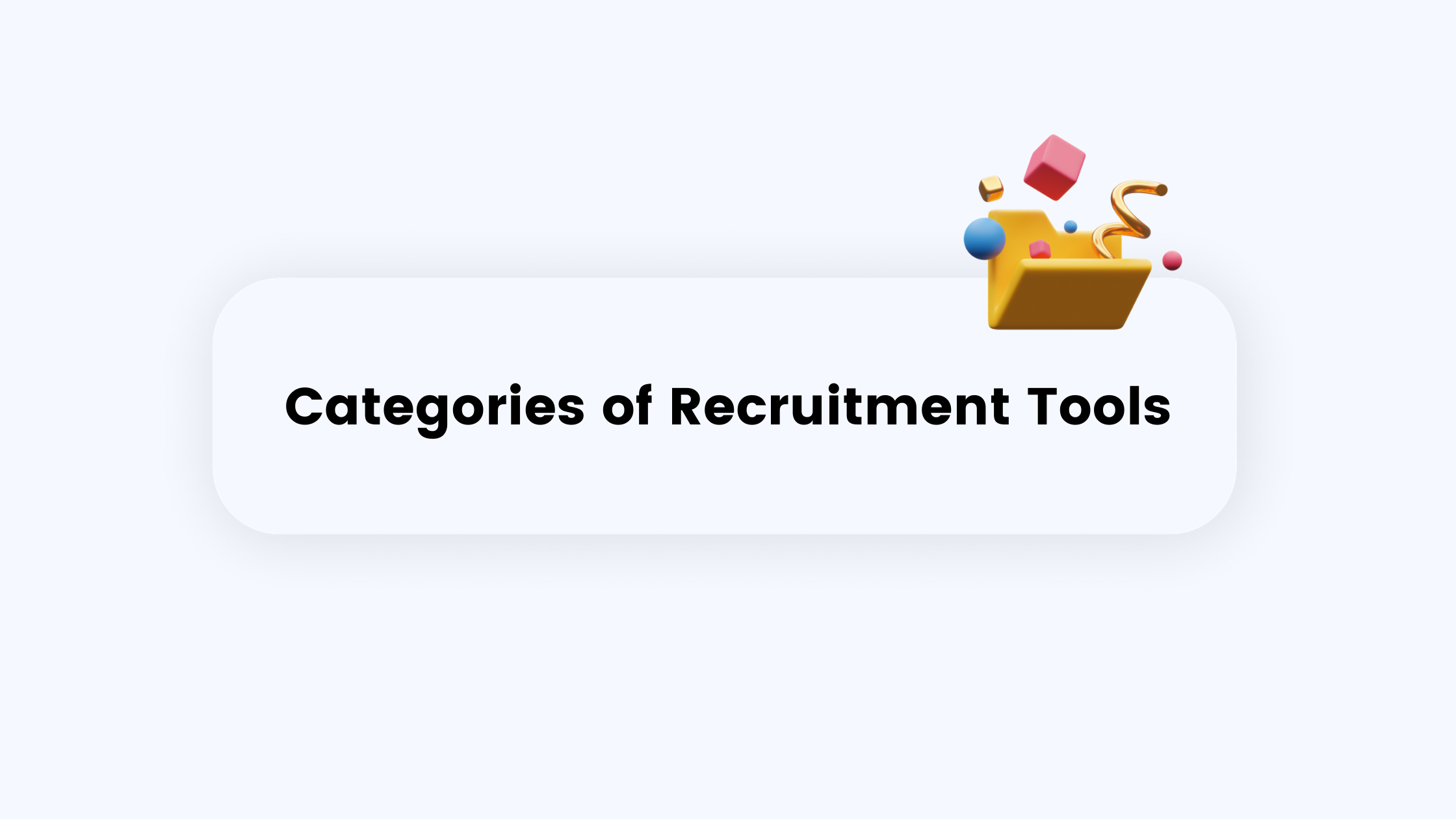IT Recruiting
The Ultimate List of Recruitment Tools

The recruitment landscape has fundamentally transformed in 2025. While 67% of talent acquisition professionals see increased AI usage as a top trend, companies that thought AI would be a game changer for recruitment tools are now concerned about its inaccuracies, with 40% of talent specialists worrying that too much AI could make the hiring process impersonal.
Given the current tech market reality—where software developer job listings have dropped 35% compared to five years ago yet quality expectations have skyrocketed—modern recruiting demands a strategic blend of advanced tools and human expertise.
Let’s rethink how you approach recruitment tools in this evolving landscape.
The New Reality: Why Traditional Recruiting Tools Aren’t Enough
The 2020-2021 tech hiring frenzy was exceptional; a period many now look back on with nostalgia and disbelief. Fast forward to 2025, and the landscape has transformed dramatically. The market shift has created several challenges that traditional tools struggle to address:
The AI Authenticity Problem: Companies are being swamped by “fake” candidates and applications created by AI tools, making it harder to find qualified engineers and raising the risk of making the wrong hire. What we’re seeing with AI-generated applications means your screening process needs sophisticated validation beyond keyword matching.
Skills Over Credentials Revolution: Skill-based hiring will be a primary focus in 2025, with hiring for skills being five times more predictive of job performance than hiring based on education. This shift requires tools that can assess actual capabilities rather than just parse resume buzzwords.
The Gen Z Hiring Challenge: With Gen Z accounting for more than a quarter of the global workforce by 2025, employer branding remains a critical priority, with 57% of recruiting pros predicting their investment in employer branding will increase.

AI-Powered Recruitment Tools: The Game Changers of 2025
The Promise and Perils of AI in Recruitment
AI-powered recruitment systems can reduce time-to-hire by an average of 40%—a significant increase from the 30% reported in the previous year. However, the reality in today’s legal landscape is more complex than the productivity promises suggest.
Critical Legal Developments: In May 2025, the Northern District of California conditionally certified Age Discrimination in Employment Act (ADEA) claims against Workday in a class action lawsuit alleging their AI-based applicant recommendation system violated federal antidiscrimination laws due to disparate impact on job applicants based on race, age, and disability. The collective could potentially include “hundreds of millions” of members from 1.1 billion applications that were rejected using Workday’s software tools.
This landmark case illustrates the legal risk associated with employing AI tools and the need for employers to be thoughtful as they implement them.
Intelligent Applicant Tracking Systems (ATS)
The new generation of ATS platforms go far beyond simple CV tracking, but selecting the right provider requires careful due diligence around bias mitigation and compliance frameworks.
AI-Enhanced ATS Platforms to Consider:
- Workable: Despite the broader industry challenges, Workable’s AI job posting tool and AI Screening Assistant provide profile scores and detailed summaries of candidate-job fit with transparency features
- Greenhouse: Built for large-volume candidate sourcing with sophisticated analytics and strong audit trails
- Paradox: Launched the world’s first conversational ATS in March 2024, powered by conversational AI assistant Olivia, with emphasis on candidate experience
- Breezy: an end-to-end recruitment platform that combines candidate sourcing, automated scheduling, and team collaboration features, valuable for growing companies that need comprehensive ATS functionality without the complexity of enterprise-level solutions.
What most companies miss about AI implementation: It’s not just about efficiency—it’s about demonstrable fairness and defensible decision-making processes.
AI Candidate Sourcing and Screening Tools
What most companies miss about AI sourcing: It’s not about replacing human judgment—it’s about enhancing pattern recognition at scale.
- Eightfold AI: Specializes in skills intelligence and workforce insights
- HiredScore: Recently acquired by Workday, focuses on data-driven talent matching
- Textio: Uses predictive analytics to optimize job descriptions for better candidate attraction
Video Interview and Assessment Platforms
Asynchronous video technology is experiencing huge growth, allowing applicants to film themselves answering questions and helping companies speed up the hiring process on a massive scale.
Leading Video Interview Tools:
- HackerRank: Purpose-built for technical roles with coding challenges and pre-employment testing
- VidCruiter: Comprehensive suite including automated referencing and skills testing
- Spark Hire: Supports both one-way and live video interviews with extensive ATS integrations
Collaboration and Communication Tools for Modern Teams
The reality in today’s hybrid work environment is that 40% of employers have prioritized flexible work schedules, emphasizing digital hiring trends.
Essential Collaboration Platforms
- Slack: Unlimited channels for topic-specific discussions with candidates and team members
- Trello: Transparent project management for tracking multiple hiring pipelines
- Workplace: Comprehensive communication suite with auto-translation and project management integrations
Social Media and Networking Tools
Some 78% of recruiters expect that recruiting activities will increase on social media platforms outside of LinkedIn this year. Here’s what we’re seeing with social recruiting evolution:
Beyond LinkedIn Strategies:
- Reddit Recruiting: With over 52 million daily active users, Reddit offers access to niche professional communities
- Facebook Groups: Target specific expertise areas and engage in professional discussions
- Buffer/Zoho Social: Schedule and monitor your employer branding content across platforms

Data-Driven Recruitment Analytics
Data-driven recruitment allows us to cast a wider net and find candidates who might have previously slipped under the radar. When we define the ideal candidate profile based on data, we can expand our search significantly.
Key Metrics Modern ATS Should Track:
- Source-of-hire effectiveness: Which channels deliver the highest-quality candidates
- Time-to-hire by role type: Identifying bottlenecks in your process
- Candidate experience scores: Measuring satisfaction at each touchpoint
- Diversity hiring metrics: Ensuring inclusive recruitment practices
Specialized Tools for Modern Hiring Challenges
Skills Assessment and Validation
Given the authenticity challenges in remote hiring, some companies are returning to in-person interviews or implementing paid, week-long trial weeks for applicants.
Skills Testing Platforms:
- Toggl Hire: Skills-first testing across multiple disciplines
- Interview Mocha: Over 1,000 pre-built tests available online
- Plum: Combines AI with industrial psychology to predict candidate success
Global Hiring and Compliance Tools
For distributed teams, compliance and international hiring have become critical:
- Deel: Handles compliance, payments, and legal requirements for international workers
- Oyster: Focuses on automated hiring with local intelligence for global employment
The Integration Challenge: Building Your Tech Stack
Based on our experience with similar hiring challenges, most companies make the mistake of adding tools without considering integration. The current market shift toward quality over quantity means your stack should prioritize depth over breadth.
Core Integration Requirements:
- Single Sign-On (SSO): Reduces friction for your team
- API Connectivity: Ensures data flows between platforms
- Unified Reporting: Combines metrics across all tools
- Mobile Optimization: Supports hiring teams working remotely
Cost Optimization in the Current Economic Climate
With companies prioritizing roles that drive impact and focusing on skilled talent for business-critical positions, budget allocation for recruitment tools requires strategic thinking.
Free and Low-Cost Options:
- Gender Decoder: Free tool for reducing unconscious bias in job descriptions
- Crystal: Free personality insights for better candidate communication
- ContactOut: Basic contact information sourcing
- SourceHub: Community-driven talent sourcing
ROI-Focused Investment Strategy:
Focus spending on tools that directly impact your biggest hiring challenges. For most organizations in 2025, this means:
- AI-powered screening to handle application volume
- Skills assessment to validate candidate capabilities
- Analytics platforms to optimize your hiring funnel
Implementation Strategy: Your 90-Day Rollout Plan
Days 1-30: Foundation
- Audit current tools against new requirements
- Implement core ATS with AI capabilities
- Establish baseline metrics for comparison
Days 31-60: Enhancement
- Add specialized tools for your highest-volume roles
- Train team on new platforms and workflows
- Begin A/B testing different approaches
Days 61-90: Optimization
- Analyze performance data and adjust
- Integrate advanced features like video interviews
- Refine candidate experience based on feedback
Looking Ahead: Preparing for Continued Evolution
The AI revolution isn’t just changing what developers build—it’s changing who you need to hire. Entry-level hiring will increase, but entry-level engineers will be expected to use GenAI coding tools and get to the senior level faster than before.
Key Considerations for Tool Selection:
- Scalability: Can the tool grow with your changing needs?
- AI Ethics: Does the vendor prioritize bias reduction and fairness?
- Integration Flexibility: Will it work with future tools you might need?
- Data Security: Critical for protecting candidate information
The Bottom Line
Recruitment tools in 2025 aren’t just about efficiency—they’re about survival in a transformed talent landscape. Companies that balance AI efficiency with genuine human interaction will win the war for talent.
The traditional approach of sending 20 CVs hoping one sticks doesn’t work in today’s competitive market. Instead, successful recruiting in 2025 requires sophisticated tools that understand both technical requirements and cultural fit, combined with human expertise to navigate the nuances of candidate relationships.
Your recruitment technology stack should be as strategic as your business plan. The question isn’t whether to invest in modern recruitment tools—it’s how quickly you can implement them while maintaining the human touch that top candidates expect.
Ready to revolutionize your hiring process? The tools exist, the playbook is clear, and the market rewards those who move decisively. Let’s discuss how the current tech landscape impacts the specific roles you’re looking to fill.